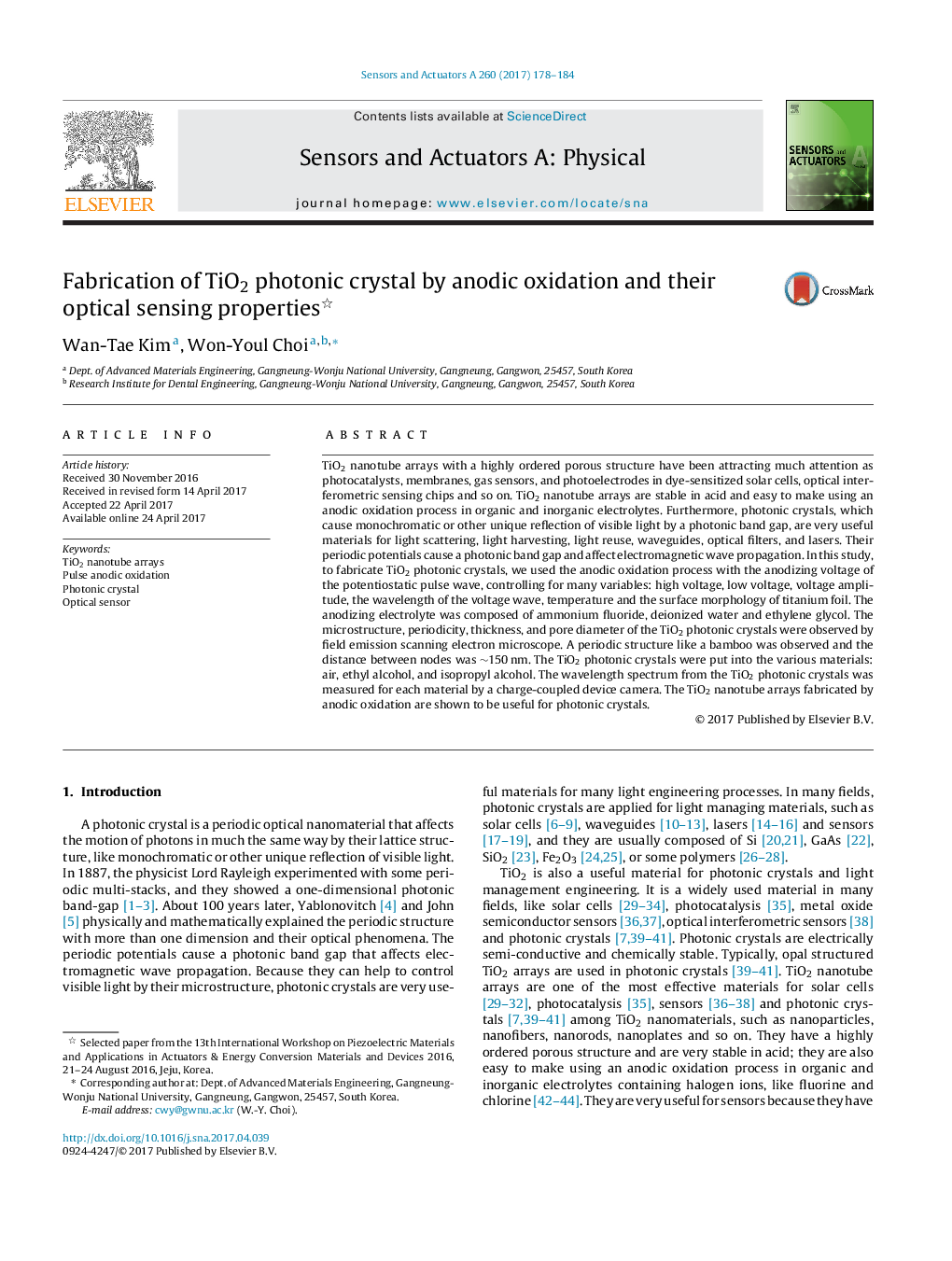| Article ID | Journal | Published Year | Pages | File Type |
|---|---|---|---|---|
| 5008294 | Sensors and Actuators A: Physical | 2017 | 7 Pages |
â¢Anodic oxidation process to control the microstructure of TiO2 nanotube arrays.â¢Bamboo-like TiO2 nanotube arrays for the photonic crystal sensor.â¢The change of optical sensing property with roughness and grain size of Ti foil.â¢Good optical sensing performance on various materials in TiO2 nanotube arrays.
TiO2 nanotube arrays with a highly ordered porous structure have been attracting much attention as photocatalysts, membranes, gas sensors, and photoelectrodes in dye-sensitized solar cells, optical interferometric sensing chips and so on. TiO2 nanotube arrays are stable in acid and easy to make using an anodic oxidation process in organic and inorganic electrolytes. Furthermore, photonic crystals, which cause monochromatic or other unique reflection of visible light by a photonic band gap, are very useful materials for light scattering, light harvesting, light reuse, waveguides, optical filters, and lasers. Their periodic potentials cause a photonic band gap and affect electromagnetic wave propagation. In this study, to fabricate TiO2 photonic crystals, we used the anodic oxidation process with the anodizing voltage of the potentiostatic pulse wave, controlling for many variables: high voltage, low voltage, voltage amplitude, the wavelength of the voltage wave, temperature and the surface morphology of titanium foil. The anodizing electrolyte was composed of ammonium fluoride, deionized water and ethylene glycol. The microstructure, periodicity, thickness, and pore diameter of the TiO2 photonic crystals were observed by field emission scanning electron microscope. A periodic structure like a bamboo was observed and the distance between nodes was â¼150Â nm. The TiO2 photonic crystals were put into the various materials: air, ethyl alcohol, and isopropyl alcohol. The wavelength spectrum from the TiO2 photonic crystals was measured for each material by a charge-coupled device camera. The TiO2 nanotube arrays fabricated by anodic oxidation are shown to be useful for photonic crystals.
